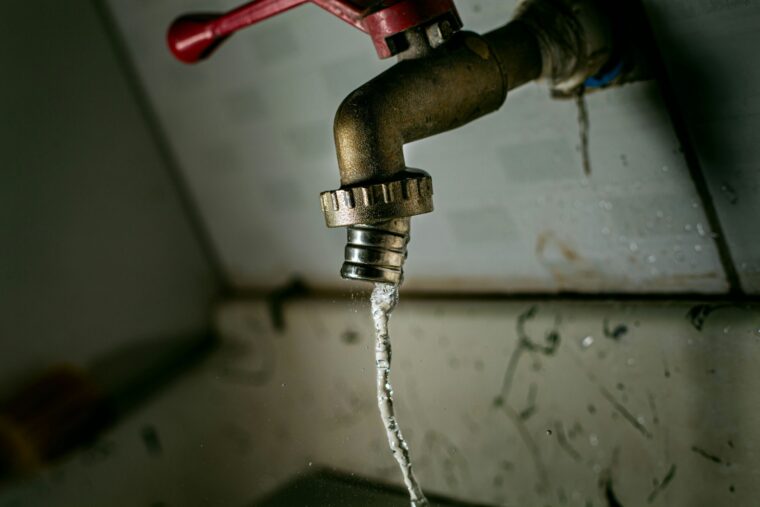
Researchers at the University of Utah have developed a new method for harvesting water out of thin air. The device, developed by mechanical engineers at the University of Utah’s John and Marcia Price College of Engineering with funding from the U.S. army, is capable of converting water vapor in the air into liquid form. As drought-stressed regions of the U.S. are increasingly looking for innovative ways to conserve and produce water, the research offers hope that innovative technology could eventually play a major role in long-term water planning.
In an article published by the University of Utah, the researchers who invented the device described their process and its potential uses.
“As we were designing the system, I think we also had perspective of the broader water problem. It’s not just a defense issue, it’s very much a civilian issue,” said Dr. Sameer Rao, a senior author of the study detailing the discovery and an assistant professor of mechanical engineering at the University of Utah. “This would literally produce water on demand.”
Although the research is funded through the DEVCOM Soldier Center for defense uses, the opportunity to produce water instantaneously has potential uses for drought-prone regions facing increasingly unreliable water sources, such as the Colorado River. Particularly in the west and southwest, billions of dollars have flowed to water-conservation efforts and technologies such as desalination. Recently, Arizona finalized rules for reusing treated wastewater, and the Department of Interior gave out $179 million for water recycling projects in California and Utah. The University of Utah device, if it can be duplicated at a large scale, could be another tool for ensuring water needs are met as climate change contributes to increasing water scarcity across the region.
The University of Utah’s device employs a two-step process to extract water from the atmosphere, and it can even work in arid conditions. The first step utilizes adsorbent materials known as metal organic frameworks (MOFs) made from aluminum fumarate. The MOFs are fashioned into panels through which air is drawn. The unique structure of these materials provides an enormous internal surface area – one gram offers as much surface area as two football fields. This vast molecular-scale surface area allows the MOFs to stop and hold water molecules from the passing air.
“The water molecules themselves get trapped on the surfaces of our material, and that’s a reversible process. And so instead of becoming ingrained into the material itself, it sits on the walls,” said Nathan Ortiz, a graduate student who worked on the research project with Dr. Rao.
Once the MOFs have collected water molecules, the device moves to its second step: releasing the trapped water in liquid form. This is achieved by applying heat to the adsorbent material. The researchers said this can be done with standard-issue Army camping stove or similar fuel-based heat source. As the temperature increases, the water molecules are rapidly released from the MOF surfaces, creating a humid airstream. The humidity makes it much easier to condense the water vapor into liquid water.
The Utah team’s work joins a growing body of research from universities worldwide, all aimed at addressing the looming water crisis.
While Utah’s device uses a liquid fuel source that makes it reliable at all times, researchers at UC Berkeley created a similar device in 2023 that runs off solar power, making it more environmentally friendly. UC Berkeley’s atmospheric water harvester leverages MOFs to extract water from air. This hand-held device, powered solely by ambient sunlight, can produce about a cup of water daily per kilogram of MOF. Successfully tested in Death Valley, it demonstrates remarkable efficiency, converting 85-90% of captured water vapor into drinkable water.
Rather than utilizing high surface area MOFs, researchers at MIT developed a similar method using highly absorbent gels. This transparent, rubbery material combines hydrogel with lithium chloride salt, allowing it to absorb and retain unprecedented amounts of moisture across various humidity levels. The material can swell to accommodate more moisture without leaking, and the absorbed water can be heated, condensed and collected as pure drinking water. This approach could potentially be used for passive water harvesting in arid regions or as an energy-saving dehumidifying element in air conditioning systems.
Although it is not the first device capable of harvesting drinkable water from the air, the University of Utah’s may be the most efficient so far. In a proof-of-concept test, the device invented by Rao and Ortiz was capable of producing 5 liters of water — about 21 cups— for one kilogram of absorbent MOF.
“We think in terms (of) water consumption of a household for drinking water per day. That’s about 15 to 20 liters per day,” Rao said.
Photo by Ian Talmacs on Unsplash
The post Researchers in Utah develop method for harvesting water from air appeared first on Government Market News.
